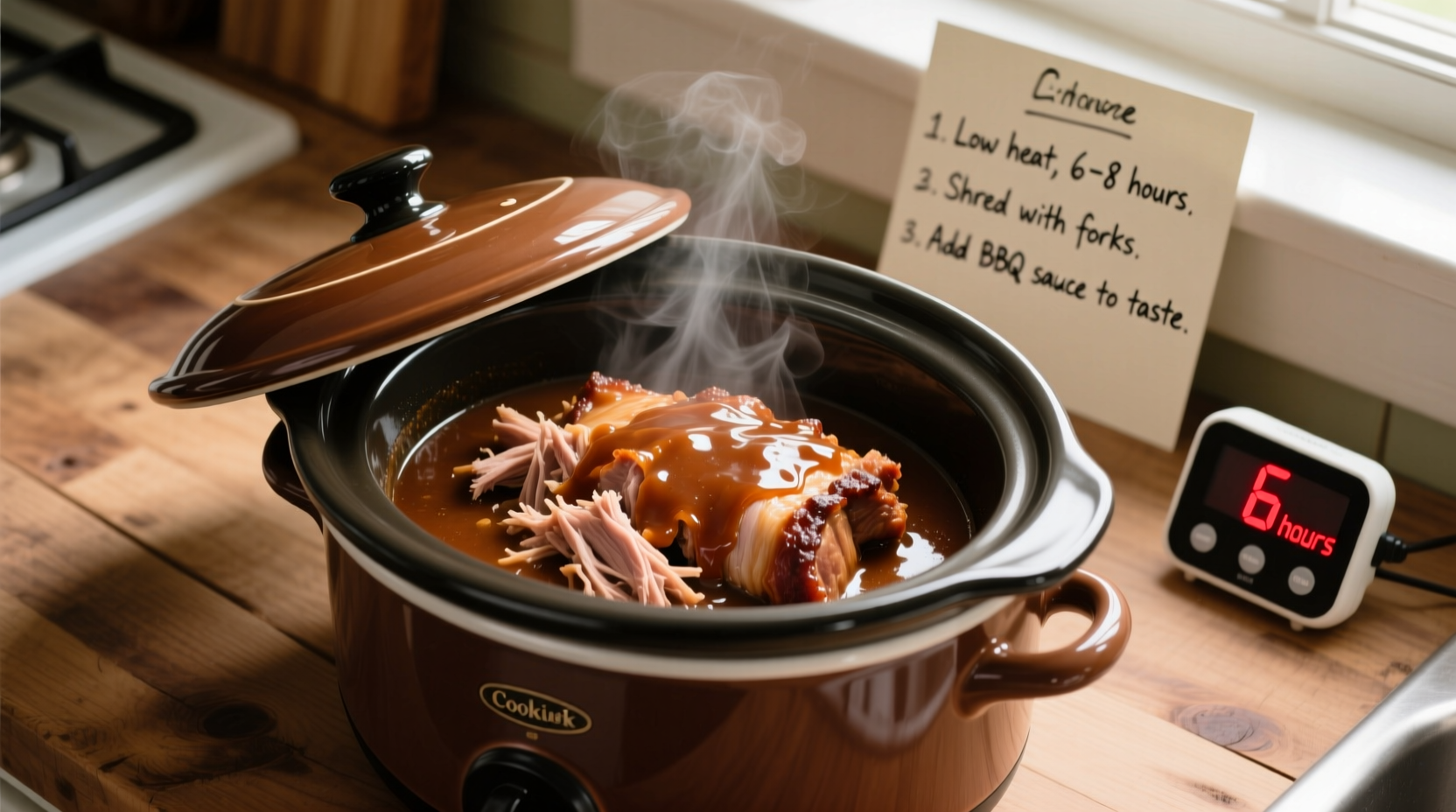Nothing beats the tender, flavorful perfection of slow-cooked pulled pork. But getting that melt-in-your-mouth texture depends entirely on cooking time and temperature. Get it wrong, and you'll end up with tough, dry meat that won't shred properly. This guide delivers precise timing guidelines backed by food science so you can achieve restaurant-quality pulled pork every time.
Why Timing Matters for Perfect Pulled Pork
The magic of pulled pork happens when collagen breaks down into gelatin. This transformation requires both time and consistent heat. According to USDA Food Safety guidelines, pork shoulder must reach a minimum internal temperature of 145°F, but for pulled pork, you need to go much higher—to 195°F—to fully break down connective tissues. The crock pot's gentle, consistent heat makes it ideal for this slow transformation.
| Pork Shoulder Weight | Low Setting Time | High Setting Time | Internal Temperature |
|---|---|---|---|
| 2-3 pounds | 6-8 hours | 4-5 hours | 195°F |
| 3-4 pounds | 8-10 hours | 5-6 hours | 195°F |
| 5-6 pounds | 10-12 hours | 7-8 hours | 195°F |
The Science Behind the Perfect Cook Time
Understanding the collagen-to-gelatin conversion process explains why timing is so crucial. As noted in research from the University of Nebraska-Lincoln Food Science Department, collagen begins breaking down at 160°F but requires sustained heat to fully transform. The timeline looks like this:
- 0-4 hours: Surface temperature rises, initial moisture loss
- 4-6 hours: Collagen begins breaking down, meat becomes tender
- 6-8 hours: Significant collagen conversion, meat starts pulling apart
- 8-10 hours: Complete collagen breakdown, perfect shredding texture
Going beyond 10 hours on LOW setting risks drying out the meat, while stopping too early leaves it tough and chewy. The sweet spot is when the internal temperature hits 195°F—verified by the fork test described below.
Factors That Affect Your Cooking Time
While the standard timing works for most situations, these variables can change your ideal cook time:
Crock Pot Size and Model Differences
Older crock pots may run hotter or cooler than newer models. According to Consumer Reports testing, temperature consistency varies significantly between brands. Always use a reliable meat thermometer rather than relying solely on timer settings.
Starting Temperature of the Meat
Meat straight from the refrigerator takes longer to reach target temperature than room-temperature meat. For best results, let your pork sit at room temperature for 30 minutes before cooking.
Altitude Considerations
At higher elevations (above 3,000 feet), water boils at lower temperatures, which affects cooking times. The Colorado State University Extension recommends adding 5-10% more cooking time for every 1,000 feet above sea level.

How to Know When Your Pulled Pork Is Perfectly Done
Timing guidelines are helpful, but these tests confirm doneness more accurately:
- Thermometer Test: Insert a probe thermometer into the thickest part—it should read 195°F
- Fork Test: Two forks should pull the meat apart with almost no resistance
- Texture Check: Meat should feel soft and yielding, not springy or tough
- Juice Test: Clear juices should run when you pull the meat apart
Many home cooks make the mistake of pulling pork too early. Remember that the meat continues to cook slightly from residual heat after removal from the crock pot. For competition-quality results, let it rest for 30 minutes before shredding—this allows juices to redistribute.
Avoid These Common Pulled Pork Mistakes
Even with perfect timing, these errors can ruin your pulled pork:
- Skipping the sear: Browning the meat first creates complex flavor compounds through the Maillard reaction
- Overcrowding the pot: Too much meat lowers the temperature and creates steam instead of slow cooking
- Removing too much fat: Some fat is necessary for flavor and moisture—trim only excess hard fat
- Shredding immediately: Resting allows connective tissues to set for better texture
Storing and Reheating Leftovers Properly
Proper storage maintains texture and flavor for future meals:
- Store in an airtight container with some cooking liquid for up to 4 days
- Freeze for up to 3 months in portion-sized containers
- Reheat gently in the crock pot with a splash of broth to maintain moisture
- Avoid microwaving large portions, which creates uneven heating and rubbery texture
When reheating, bring leftovers to 165°F internal temperature as recommended by USDA Food Safety guidelines to ensure food safety while preserving texture.











 浙公网安备
33010002000092号
浙公网安备
33010002000092号 浙B2-20120091-4
浙B2-20120091-4